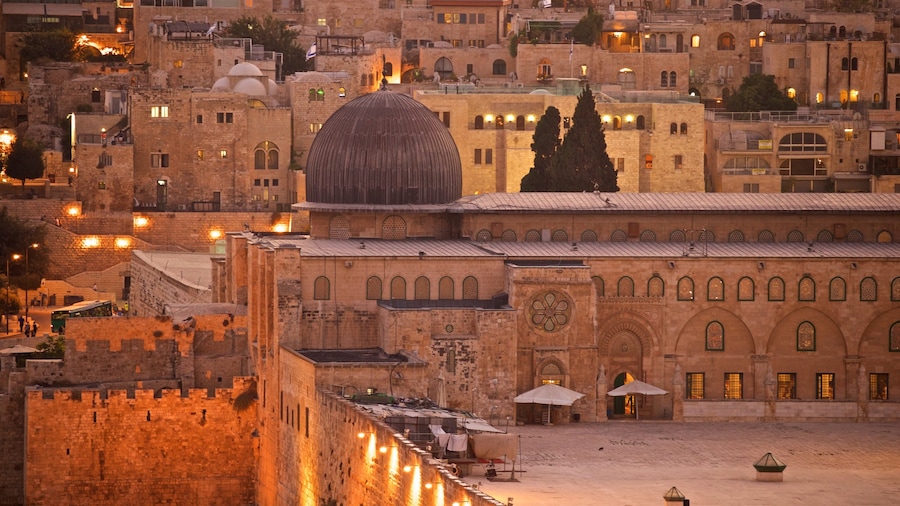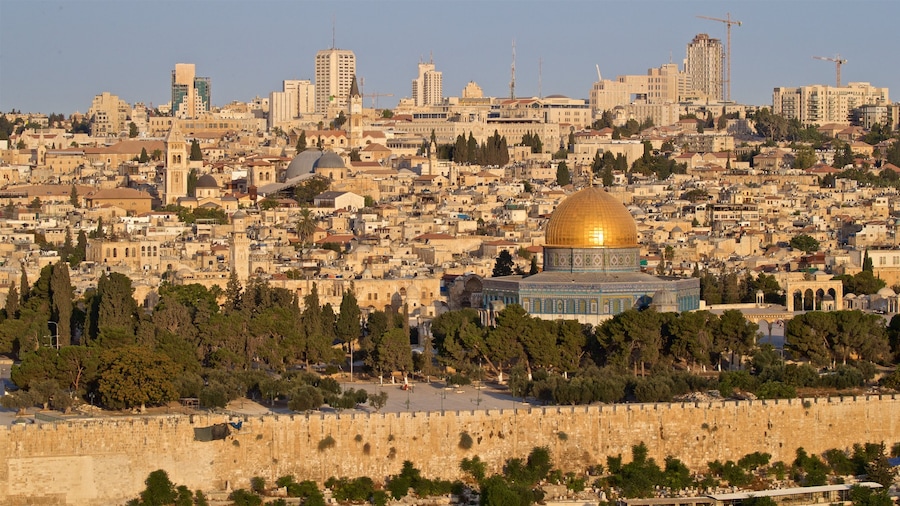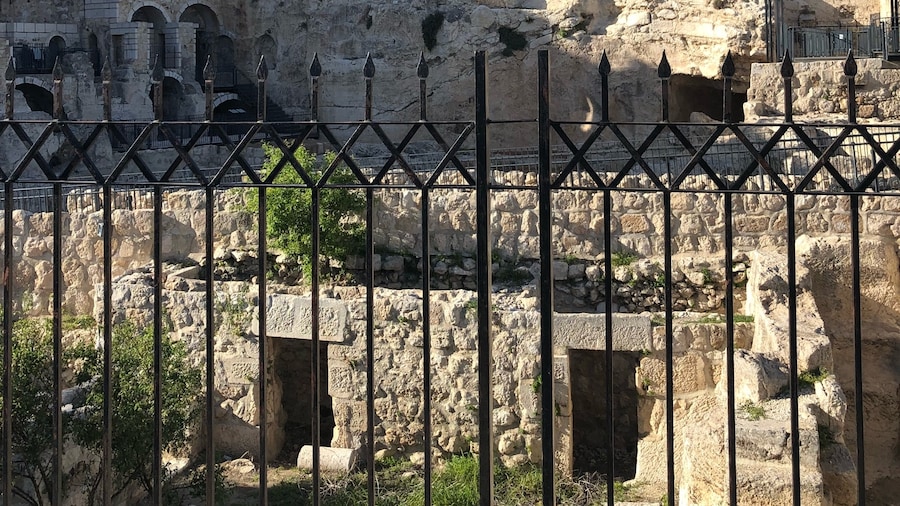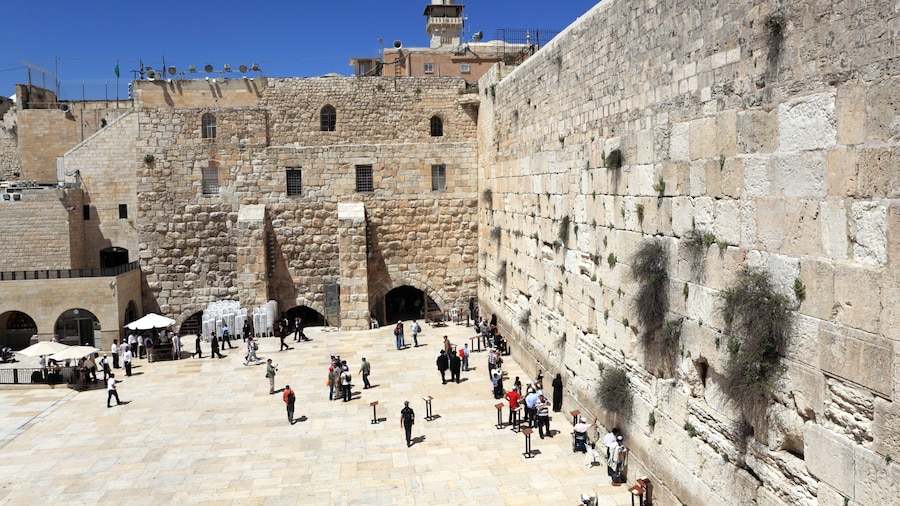This 2,000-year-old structure is one of the world’s holiest sites, where hundreds of praying worshippers make for a stirring sight.
The Western Wall, also known as the Al-Buraq Wall, the Kotel or the Wailing Wall, has been a site of pilgrimage for Jews and Muslims for centuries. Its towering sandstone blocks are stuffed with paper prayers. Watch as men, women and children gather here to recite scriptures and touch the ancient stone.
Read up on the wall’s fascinating history before you visit. The 1,600-foot-long (488-meter) structure was built in the 1st century B.C. as part of the renovation of the Second Temple by King Herod. The Second Temple was destroyed by the Romans in A.D. 70, but the Western Wall survived. The wall became a site of pilgrimage for Jews during Ottoman times, when they would come to mourn the fall of the temple.
Learn about the importance the site hold for Muslims too. It is believed that the Prophet Muhammad tied his horse to this wall during his journey to Jerusalem, just before he ascended to paradise.
Today, the wall is still revered and attracts thousands of people, even those with no religious belief. Visitors come to pay their respects and touch a piece of history. Approach from the sloping plaza that leads down to the base of the wall and you will see the different kinds of stone used in its construction and upkeep.
Look for the lowest stones, laid around 2,000 years ago. The middle section, meanwhile, is thought to date from the 7th and 8th centuries. The highest, smallest stones were added in the 20th century.
It is free to visit the Western Wall year-round, 24 hours a day. Men and women are segregated, and women must cover their shoulders and knees while men need to wear hats (kippot are provided). Tours can be booked in advance for a fee. Come on a Friday, just before sunset, and the plaza will be at its busiest. On Thursdays, the wall is a popular location for Bar Mitzvahs. At these times, the atmosphere is very special, as the prayers of hundreds of Orthodox Jews fill the air to become a single, low, holy hum.



















